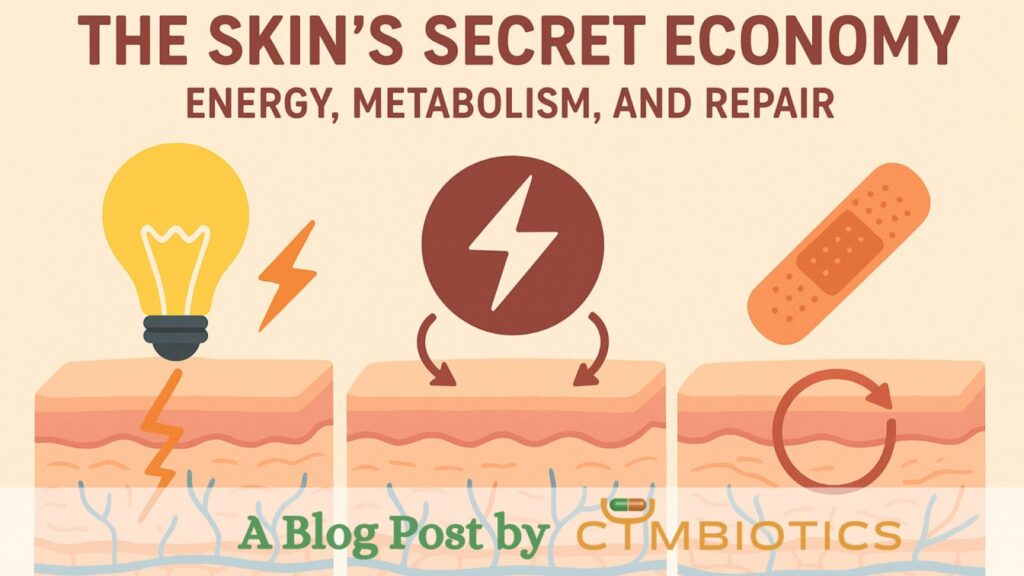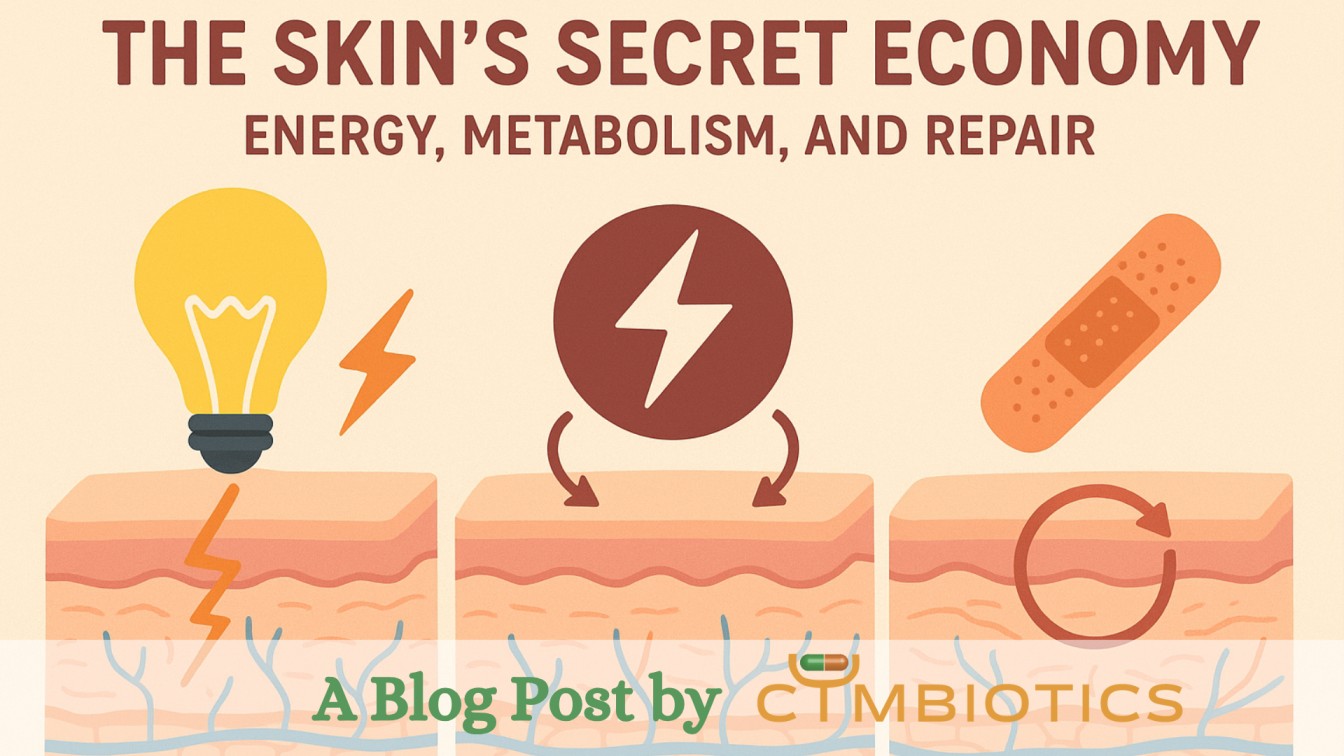Skin is more than a barrier, it’s a bustling biological economy. Every second, its cells are spending, saving, and regenerating energy to keep the surface you see functioning as a dynamic, self-repairing organ. From wound healing to barrier restoration, every process relies on how efficiently the skin manages its internal energy balance.
Energy: The Currency of Skin Health
Just like any economy, skin depends on a stable flow of energy. Adenosine triphosphate (ATP), the primary energy molecule, fuels nearly all skin activities, from keratinocyte renewal and lipid synthesis to immune defense. ATP is generated within mitochondria, the “powerhouses” of skin cells, which adapt continuously to environmental shifts such as UV radiation, humidity, and temperature.
Healthy mitochondrial metabolism ensures efficient cell turnover, collagen synthesis, and barrier lipid production. But when this system is disrupted, through oxidative stress, pollution, or chronic inflammation, energy output drops. The result is slower repair, dullness, and increased sensitivity.
When Energy Balance Breaks
Oxidative stress acts like a tax on the skin’s energy system. Free radicals generated by UV exposure or urban pollution consume antioxidants and damage mitochondria. This reduces ATP production, forcing skin cells to divert limited energy toward damage control instead of regeneration.
Persistent stress or inflammation alters lipid metabolism and impacts hydration, slowing barrier restoration. Over time, skin begins to “budget” resources differently, prioritizing short-term survival over long-term maintenance, which can manifest as visible fatigue, sensitivity, and slower healing.
The Metabolic Cost of Repair
Repairing a disrupted barrier is metabolically expensive. Each step, from cell proliferation to lipid reorganization, demands coordinated ATP consumption. During recovery, keratinocytes increase glucose uptake and mitochondrial activity to meet higher energy needs.
Yet in conditions like chronic dryness, eczema, or prolonged inflammation, energy supply is often insufficient. Dehydrated or damaged cells operate under “energy debt,” leading to incomplete repair and heightened transepidermal water loss (TEWL).
Restoring mitochondrial integrity is critical, as energy-deficient skin cannot rebuild its lipid matrix effectively, underscoring the link between cellular metabolism and barrier resilience.
Rebuilding the Energy Economy
Supporting the skin’s energy systems requires strategies that protect mitochondria, restore lipid synthesis, and reduce oxidative burden. This includes maintaining hydration to ensure enzymatic efficiency, minimizing environmental stressors, and reinforcing the antioxidant network that preserves cellular energy flow.
Topical science now focuses on energy-efficient delivery, ensuring actives reach target sites with minimal cellular strain. This aligns with emerging approaches in bioenergetic modulation, using well-formulated topicals to support mitochondrial function and ATP regeneration at the epidermal level.
A balanced “skin economy” depends on three pillars:
- Protection – Reducing oxidative and inflammatory load.
- Restoration – Supporting lipid metabolism and hydration.
- Efficiency – Delivering bioactives without overtaxing cellular resources.
Cymbiotics’ Perspective: Powering Skin’s Natural Balance
At Cymbiotics, every innovation begins with understanding the skin as a living, energy-dependent ecosystem. Technologies like Cetosomes™ and FADD™ (Fast Acting Dermal Delivery) are designed to optimize ingredient penetration, stability, and efficacy, enhancing bioenergetic efficiency while minimizing barrier disruption.
By focusing on formulations that protect cellular metabolism and restore balance, Cymbiotics empower skin resilience, maintaining its economy of energy, repair, and renewal. When the skin’s energy is strong, every process, from healing to hydration; runs at full potential.
References
- Sreedhar A et al., Mitochondria in skin health, aging, and disease, Antioxidants, 2020.
- Lin J et al., Mitochondria’s Role in Skin Ageing, International Journal of Molecular Sciences, 2023.
- He T et al., Mitochondrial dynamics and metabolism across skin cells: implications for skin homeostasis and aging, Frontiers in Physiology


